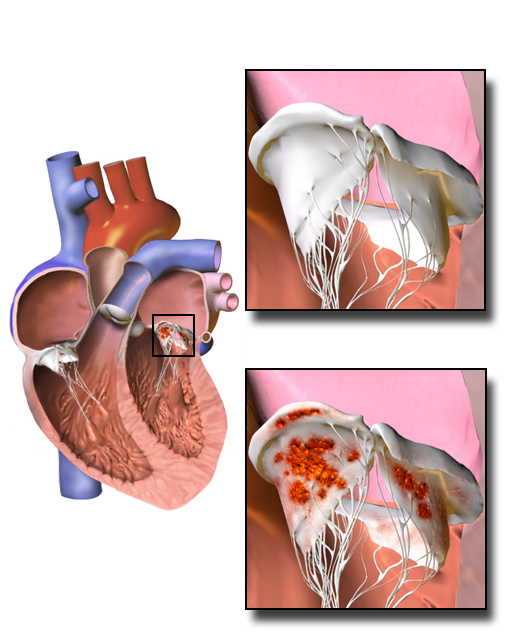|
Roth's Spots
Roth's spots, also known as Litten spots or the Litten sign, are non-specific red spots with white or pale centres, seen on the retina and although traditionally associated with infective endocarditis, can occur in a number of other conditions including hypertension, diabetes, collagen vascular disease, extreme hypoxia, leukemia and HIV. Red and white retinal spots were first observed in 1872 by Swiss physician Moritz Roth, and named "Roth spots" six years later by Moritz Litten. They are typically observed via fundoscopy (using an ophthalmoscope to view inside the eye) or slit lamp exam. The original retinal spots identified in 1872 were attributed to nerve-fibres that had burst. Present-day analysis shows that they can be composed of coagulated fibrin including platelets, focal ischaemia, inflammatory infiltrate, infectious organisms, or neoplastic cells. Cause Roth's spots occur in conditions that predispose to endothelial damage of retinal capillaries, that is when there is ... [...More Info...] [...Related Items...] OR: [Wikipedia] [Google] [Baidu] |
Ophthalmology
Ophthalmology ( ) is a surgical subspecialty within medicine that deals with the diagnosis and treatment of eye disorders. An ophthalmologist is a physician who undergoes subspecialty training in medical and surgical eye care. Following a medical degree, a doctor specialising in ophthalmology must pursue additional postgraduate residency training specific to that field. This may include a one-year integrated internship that involves more general medical training in other fields such as internal medicine or general surgery. Following residency, additional specialty training (or fellowship) may be sought in a particular aspect of eye pathology. Ophthalmologists prescribe medications to treat eye diseases, implement laser therapy, and perform surgery when needed. Ophthalmologists provide both primary and specialty eye care - medical and surgical. Most ophthalmologists participate in academic research on eye diseases at some point in their training and many include research as part ... [...More Info...] [...Related Items...] OR: [Wikipedia] [Google] [Baidu] |
Infective Endocarditis
Infective endocarditis is an infection of the inner surface of the heart, usually the valves. Signs and symptoms may include fever, small areas of bleeding into the skin, heart murmur, feeling tired, and low red blood cell count. Complications may include backward blood flow in the heart, heart failure – the heart struggling to pump a sufficient amount of blood to meet the body's needs, abnormal electrical conduction in the heart, stroke, and kidney failure. The cause is typically a bacterial infection and less commonly a fungal infection. Risk factors include valvular heart disease, including rheumatic disease, congenital heart disease, artificial valves, hemodialysis, intravenous drug use, and electronic pacemakers. The bacteria most commonly involved are streptococci or staphylococci. Diagnosis is suspected based on symptoms and supported by blood cultures or ultrasound of the heart. There is also a noninfective form of endocarditis. The usefulness of antibiotic ... [...More Info...] [...Related Items...] OR: [Wikipedia] [Google] [Baidu] |

